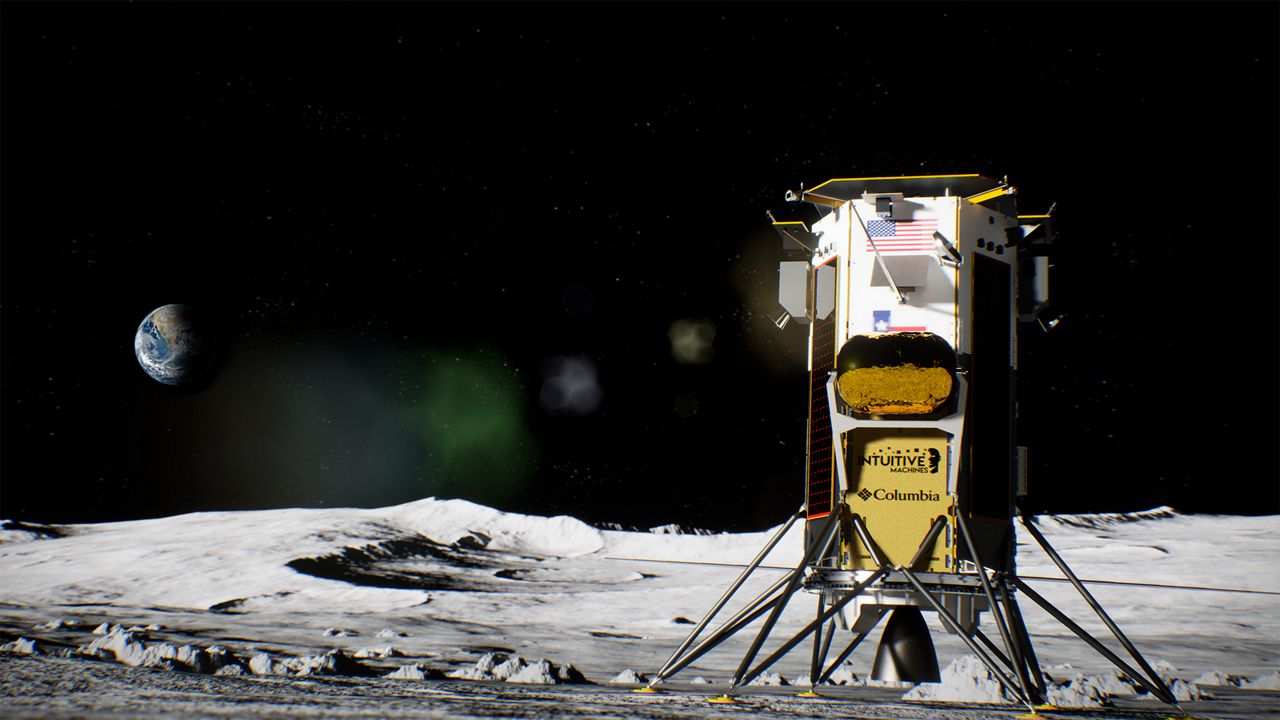CAPE CANAVERAL SPACE FORCE — If all goes according to plan on Thursday, Intuitive Machines’ IM-1 mission will be the first moon landing by a private company and it will be the first time people will get to see such a landing from a third-person perspective.
What You Need To Know
- The moon landing is expected to happen early Thursday evening
Countdown to moon landing
The Huston-based Intuitive Machines’ Nova-C lunar lander, named Odysseus, took about eight days to travel to the moon, after lifting off from Florida’s Kennedy Space Center on Thursday, Feb. 15.
The company posted on X, formerly Twitter, that Odysseus and its payloads would reach Earth’s lunar sister at around 5:49 p.m. ET, Thursday, Feb. 22. However, in a recent post, NASA stated the landing should be at 5:30 p.m. ET, Thursday.
Odysseus, @Int_Machines’ uncrewed Moon lander, is targeted to touch down at the lunar South Pole at 5:30pm ET (2230 UTC) Feb. 22. Watch live with us as this Moon delivery brings science instruments to study the region. https://t.co/7U0WfJG56b pic.twitter.com/9JXBdD4y6K
— NASA (@NASA) February 22, 2024
Arriving and staying on the moon
Josh Marshall, Intuitive Machines’ communications director, gave Spectrum News a breakdown of what to expect of Odysseus’ landing, assuming it all goes according to plan.
“We are using Unreal Engine 5 (software) to interpret flight telemetry data from the lander up until PDI (powered descent initiation). Then, we are switching to an animation-only (not live telemetry) through vertical descent. Telemetry sent from the lander to flight controllers in Nova Control serves as the confirmation of soft touchdown,” Marshall explained.
That soft touchdown is expected to take place at crater Malapert A, near the south pole of the moon.
And while there is animation during the landing phase, there will be actual images, Marshall promised.
“Nova-C is programmed to take images during descent. We expect the first images to arrive on Earth approximately 30 minutes after touchdown. We expect EagleCam images to arrive after several hours on the lunar surface,” he stated.
Scroll down to “A series of firsts” to learn more about the EagleCam.
The NOVA-C lunar lander is expected to be active for seven Earth days to complete the tasks it and its payloads hope to complete.
But after seven days, it will not be able to survive the lunar night, which is about two Earth weeks, Marshall stated.
“Because of the extreme cold temperatures, Nova-C's electronics are expected to freeze and not recover after the lunar night passes,” he shared in an email.

A series of firsts
This mission is packed with a lot of firsts, in addition to being the first time a private company successfully lands on the moon.
This will be the first time there will be photos of a spacecraft landing on the moon, thanks to Embry-Riddle Aeronautical University’s CubeSat camera system called EagleCam.
“Even after working on EagleCam for four years, it still seems surreal that EagleCam will be the first object to record a (third) person point of view of a spacecraft landing on the moon,” explained Taylor Yow, an aerospace engineering grad student at the university and EagleCam project manager.
Yow shared that the EagleCam will eject from the Nova-C lunar lander when it is about 99 feet (30 meters) above the moon’s surface during the final descent stage.
“It will take three images a second from each of its three cameras (a total of nine images a second), capturing its six-second freefall to the surface and Odysseus’ descent and soft landing,” she stated.
About an hour after landing on the moon, the EagleCam project team will receive a series of images and Yow and Dr. Troy Henderson, associate professor of aerospace engineering at the Daytona Beach, Fla. university and director of the EagleCam project, will select five photos and post them on the team’s Instagram page: @eraueaglecam.
“We will have more than 1,300 images from the lander and lunar landscapes, and other data products at the end of the mission which lasts about 30 minutes,” explained Daniel Posada, an aerospace engineering doctoral candidate and EagleCam team lead.
And it will be the first time Wi-Fi will be used for data transmission on the moon.
Henderson explained to Spectrum News that the team developed custom Wi-Fi antennas to demonstrate the first time Wi-Fi will be used on the lunar surface.
“The EagleCam team developed custom Wi-Fi antennas for this demonstration. The Wi-Fi provides short-range communications to collect the data from the deployed EagleCam to an on-board computer, where the data waits for transmission to Earth,” according to Henderson.
And it is the first time a university had a payload, the EagleCam, sent to the moon’s surface.
All about the payloads
Besides the EagleCam, there are other payloads going to the moon, many of which are from NASA, like its laser retroreflector that will work as a landing beacon for orbiting craft.
The Lunar Node 1 Navigation Demonstrator is a beacon “lighthouse,” according to NASA, that will help guide incoming spacecraft to land.
All total, NASA has six payloads, but in addition to Embry-Riddle Aeronautical University’s EagleCam, four companies will have payloads — like Hawai’i’s International Lunar Observatory Association’s ILO-X, where one of its main objectives is to get the first image of the Milky Way Galaxy’s center from the moon.
And artist Jeff Koons will have his artwork Moon Phases as a payload as well.
- In a previous Spectrum News article, Steve Altemus, the co-founder and CEO of Intuitive Machines, shared why space travel is the evolution of a commercial market.
After IM-1 and the future
The focus of the IM-1 mission is for Intuitive Machines to learn how to fly the Odysseus, but there is more to that, Marshall shared.
“(We want to) collect as many data insights to apply lessons learned to each of our subsequent missions, IM-2 and IM-3,” he stated.
Currently, the IM-2 mission is set for some time this year, according to Marshall.
